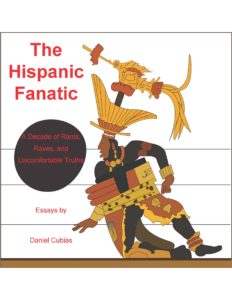The incident so outraged our hometown that hostile letters to the editor appeared in the local paper. Writers were split over whether it meant the apocalypse or merely Armageddon, but at the very least, they agreed that it was a sickening travesty that delivered a sucker punch to the gut of God himself.
And much of it was the fault of Cousin #3, who was about ten years old.
Understand that Cousin #3 has always been an assertive woman. And like all bold women, she has been attacked for this trait by a society that would prefer females to be meek. Fortunately, like all bold women, she doesn’t really put up with anybody’s shit.
The reason for the outraged letters to the newspaper were because Cousin #3 and her sister, Cousin #1, had just become the first altar girls in the state and, quite possibly, in the country. This straying from Catholic dogma is what upset so many religious purists in our hometown. Of course, the controversy died down soon enough, and I don’t know if my cousins ever knew that people wrote in to condemn their actions (by the way, if they read this, they know it now).
Of all my relatives, I believe that Cousin #3 is the closest one to me in terms of personality. Perhaps this is not a collective compliment. We have both been accused of cynicism and even abrasiveness, as if these were not appropriate mindsets — perhaps even virtues – in 21st-century America.
For example, when one of the cousins had a heart-rending breakup with a longtime girlfriend, Cousin #3 said, “You’re better off without her. You might think I’m an asshole for saying that. Well, I guess I’m an asshole then.”
Actually, Cousin #3 wasn’t being an asshole. She was just being ridiculously straightforward, assessing the truth as she saw it and passing it along – not out of maliciousness but in the hopes that it would set our grieving cousin free (by the way, this approach had mixed results).
For such directness, a relative once referred to Cousin #3 as “the girl who eats scorpions for breakfast.” The phrase is much prettier in Spanish and, I believe, meant as a compliment.
This is not to imply that Cousin #3 is some kind of high-maintenance woman in perpetual attack mode. On the contrary, she finds joy in many of the simple things in life, such as her traditional mayonnaise sandwich (just bread and mayo, nothing else).
And she doesn’t demand attention or that people kowtow to her. When her parents hosted a grand feast for her quinceanera, for example, Cousin #3 lounged in her white dress like a young hipster bride, slamming Mountain Dew and accepting congratulations. There was no pretense or vanity on display, which for a quinceanera is pretty damn rare.
She’s also willing to kick her ego to the curb to help others. This was most telling when she worked in a homeless shelter, stumping many of us who couldn’t figure out how her well-known disdain for humanity translated into compassion for society’s weakest.
Along those lines, her fondness for animals knows no bounds. I asked her once if she preferred the company of animals over humans. I was expecting one of her flickering grins and a quick dismissal of the question with her trademark “Whatever…” But she looked me right in the eye and said, “Absolutely. Animals don’t lie to you or cheat you or get greedy or hold grudges or…” And I had to cut her off before she denounced the entire human race.
But the animals, in turn, appreciate her interest in them. The day after my wife and I were married, we had a party at my in-law’s farm. Cousin #3 walked up to the fence to greet the horses, who approached her. They were nervous around strangers and rarely got that close to anyone new. But they knew they could trust Cousin #3. When they whinnied away before she could pet them, Cousin #3 took it a little personally. But then I pointed out that the electric fence was on, and they didn’t want to get shocked, and she felt better. Her focus on the horses caused her to dismiss the fact that she had been perilously close to receiving a jolt herself.
But such fearlessness has been on display before. It’s led, however, to a few mysteries. For example, years ago, she managed to get hit by a bus. I still don’t understand how that happened. I mean, she was standing on the curb and everything. How could a bus just wallop her? All I know is that she was knocked down and injured.
But like all other attempts to make Cousin #3 stay down, it failed. Eventually, she got back up again.





